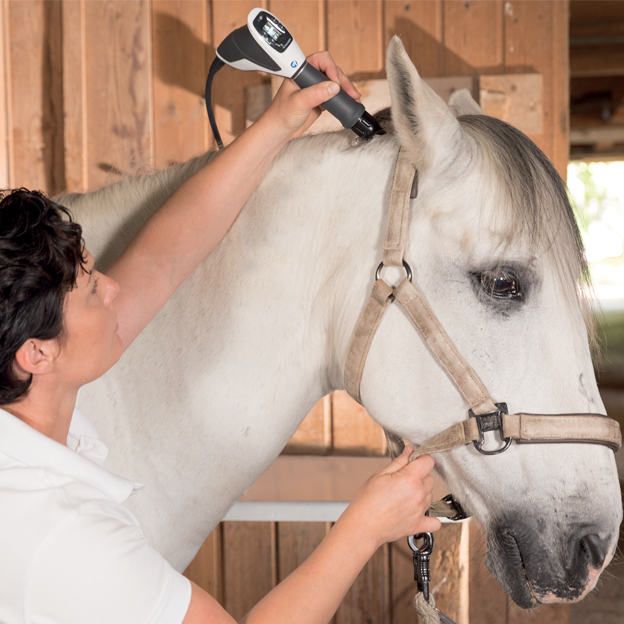The Power of Equine Therapy for Anxiety, PTSD, and Emotional Recovery
Wiki Article
Examining the Effectiveness of Laser Therapy in Horse Treatment for Injury Rehab
The examination of laser therapy's effectiveness in equine injury rehabilitation hinges on multiple factors, including healing time, pain mitigation, and cells regrowth. Vets often observe remarkable results with laser therapy compared to conventional methods, positioning it as an important aspect in equine care.Understanding Laser Therapy
Laser treatment has actually ended up being a critical tool in vet medication, especially in the therapy of equine problems. Recognized for its non-invasive nature and efficacy, laser treatment entails the application of certain wavelengths of light to promote tissue fixing and minimize inflammation. This therapeutic technique is progressively favored for its capacity to speed up the healing procedure in equines dealing with a selection of bone and joint injuries and chronic problems.The key mechanism behind laser treatment is its ability to improve mobile functions. When laser light passes through the skin, it is absorbed by mitochondria, the giant of cells, which leads to boosted manufacturing of adenosine triphosphate (ATP) This biochemical energy increase facilitates mobile repair and regeneration. Furthermore, laser therapy advertises vasodilation, improving blood flow and oxygen shipment to broken cells, hence accelerating recuperation.
In equine medicine, laser treatment is specifically advantageous for conditions such as tendonitis, osteoarthritis, and wound recovery. The strategy is admired for its pain-relieving residential properties, permitting horses to restore flexibility and feature more rapidly. Veterinarians likewise value its minimal adverse effects compared to other treatment modalities, making it a trusted and secure alternative for equine treatment.

Exactly How Laser Therapy Works

Upon absorption, these photons set off a series of biochemical adjustments, improving mitochondrial function and leading to raised adenosine triphosphate (ATP) production. This rise in ATP increases cellular metabolic rate, advertising tissue repair and regrowth. Furthermore, laser treatment modulates inflammatory responses by influencing cytokine levels and lowering oxidative anxiety, thus alleviating discomfort and swelling.
One more significant facet of laser therapy is its duty in enhancing microcirculation. The treatment promotes vasodilation, boosting blood flow and oxygen distribution to damaged cells (Equine Therapy). This facilitates the elimination of cellular particles and supports the expansion of fibroblasts and collagen synthesis, crucial for injury recovery
Medical Proof
The efficacy of laser treatment in equine treatment has been validated via different clinical research studies, showcasing its therapeutic prospective throughout a variety of problems. Several controlled tests and observational studies have actually recorded significant renovations in tissue repair service, discomfort decrease, and general recovery timelines. A research study performed by Turner et al. (2012) showed that equines treated with low-level laser therapy (LLLT) for ligament injuries exhibited sped up recovery contrasted to those getting conventional treatments. The study highlighted a marked reduction in swelling and improved go now collagen formation.Likewise, research by Johnson and associates (2015) focused on equine muscular tissue injuries, exposing that laser treatment dramatically sped up muscular tissue fiber regeneration and lowered muscular tissue stiffness. Professional assessments have actually shown that laser therapy can alleviate persistent problems such as osteoarthritis.
Vet Insights

Vets likewise value the adaptability of laser therapy. She aims out that laser therapy can be tailored to the details demands of each steed, ensuring optimal outcomes.
Furthermore, vets value the ability to integrate laser treatment with other therapy modalities. This multimodal technique can enhance general treatment efficiency, offering a thorough option for equine rehabilitation. Such recommendations from skilled professionals underscore the expanding approval and application of laser therapy in equine medicine.
Practical Factors To Consider
A key facet of implementing laser treatment in equine therapy entails recognizing the functional factors to consider that guarantee its efficacy and safety and security. First and leading, it is critical to choose the proper laser tool, as different kinds vary in wavelength, power, and infiltration deepness. Equine Therapy. Vets must be skilled in these specifications to tailor therapy procedures effectively to every injury typeFurthermore, the regularity and duration of laser treatment sessions need mindful preparation to take full advantage of healing benefits while minimizing any type of possible unfavorable results. Consistent tracking of the horse's reaction to therapy can direct needed modifications in the treatment routine. Establishing a safe and regulated setting during therapies is likewise important to stop find this accidental exposure to laser exhausts, which could harm both the steed and the Read Full Article trainer.
Training and certification of workers carrying out laser treatment are paramount to make certain proper technique and to promote safety and security criteria. Additionally, keeping accurate documents of each session, consisting of laser settings and observed outcomes, is vital for evaluating the total performance of the therapy and for making data-driven choices.
Final Thought
Laser treatment has arised as an efficient method in equine injury rehabilitation, providing substantial advantages in recovery time, discomfort relief, and tissue recovery. For ideal results, constant tracking and personalized therapy protocols continue to be essential in leveraging the complete possibility of laser treatment in equine care.Report this wiki page